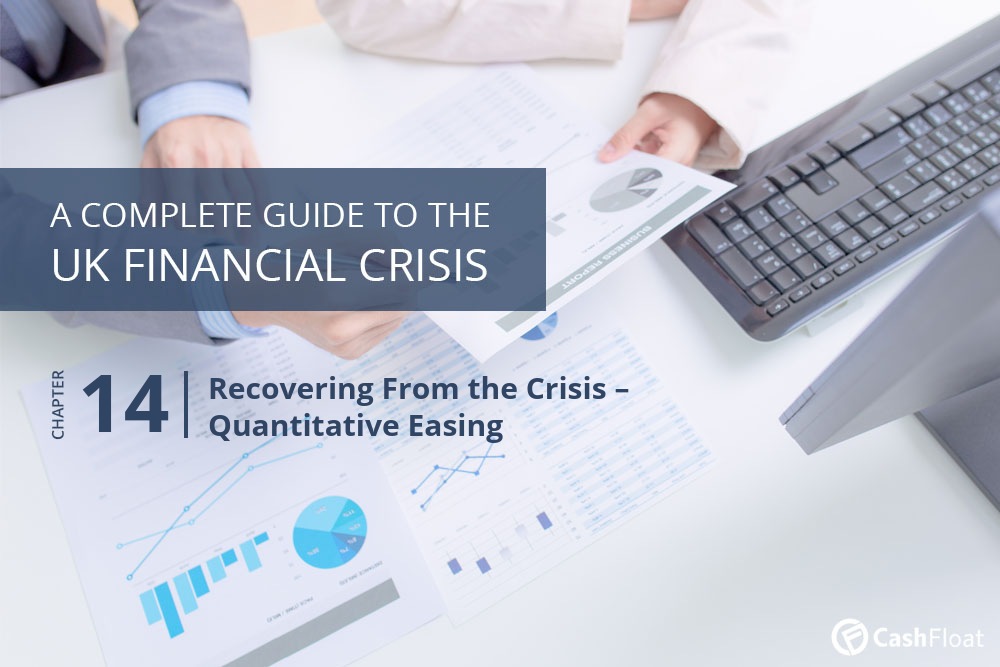
Many experts discuss using quantitative easing to encourage economies to grow. The ideal growth rate for a modern economy slows inflation and avoids stagnation. One way to achieve this ideal rate of economic growth is raising and lowering interest rates. However, when rates are so low that they can go no further, the Bank of England looks to quantitative easing as a tool to achieve just the right amount of growth. So, what is it and how does it work?
What is Quantative Easing?
Quantitative easing allows the central bank of a country to pump money directly into the economy. The bank buys up stocks (usually government bonds) using electronically printed money, i.e. new money. They use the new money to buy the bonds from assets like pension funds or banks. Thus they increase the total amount of money in the economy. New money means more lending to both individuals and businesses. This, in turn, increases spending and stimulates overall growth in the economy.
When the spectre of deflation raises its ugly head, quantitative easing is one way to generate the right amount of growth to prevent total market stagnation. The UK used this method in 2009 after the devastating credit crunch. The Bank of England purchased £200 billion in bonds between March and November. This sum helped increase the economy’s output by nearly 2% in this period.

How Did Quantitative Easing Help the UK Economy?
When the credit crunch hit the UK, the Bank of England took the lead in cutting interest rates to an all-time low in 2009. From that point, they had to explore other options to help the economy grow, besides raising and lowering interest rates. At that time, the Bank of England took quantitative easing on board as part of their policy. This measure helped raise liquidity in the banks and economy, as well as regulate the inflation rate.
The experience in the UK shows that in this instance, the monetary boost from quantitative easing did help to stabilise the level of inflation to the correct rate. However, it did not help the economic output of the country. The Consumer Price Index, which is a marker for inflation, rose by 14.4% over the four years from 2009 to 2013. While this was much better than expected, over that same period, economic growth had only risen by 3.7%. Incidentally, the government had also stopped using the Retail Price Index (usually higher) in favour of the Consumer Price Index. The Retail Price Index would have recorded the growth as lower than the Consumer Price Index.

Problems That Can Be Caused By Using QE
The issue of a real drop in wages is one issue linked to using QE to help sort out the economy. Figures show a fall of 8% in wages in real terms since the credit crunch. Lowering wages is counterproductive to QE’s goals, as this encourages people to spend less. This means less demand for goods and services and stalls the sought-after growth in the economy. As QE increased the rate of inflation, it also impacted how much money people spent. Therefore, it has proved to be a double-edged sword causing lower wages and lower rates of spending.
Savings also fell due to lower interest rates. People who had some savings not only spent less but also used the money to reduce some of their debts from the crisis. The effect of quantitative easing on savers is not yet clear, but in this instance, it did not encourage the expected amount of spending. In addition, the fall of the level of gilts and bonds meant that pension annuity rates also dropped, leading to lower incomes for pensioners and again, to lower spending. Companies which provided pensions had to prop up their pension funds (due to the lower prices of gilts). This meant fewer people investing in the struggling economy.

Summary
So, the effects of quantitative easing on the economy have been both good and bad. Some commentators have suggested that one of the good effects, increasing liquidity in the economy, may yet cause a much higher rate of inflation than the government wants or needs.
There have been further QE events since 2009 with £75 billion in October 2011, £50 billion in February 2012 and £50 billion in July 2012. These amounts add up to a massive total of £375 billion. In February 2014, the government announced that quantitative easing would remain at the current level. As assets matured, the money would be reinvested until the bank interest rates could reach a level where they could again be used to control the growth in the UK economy.
Since the UK started the trend for using quantitative easing to stimulate growth, other countries have taken the same road. The US was still operating this policy in 2014, and the ECB has recently adopted the policy of buying government bonds to try to ease the stagnant growth in the Eurozone. This method of reinflating worldwide economies looks set to continue for some years to come.



